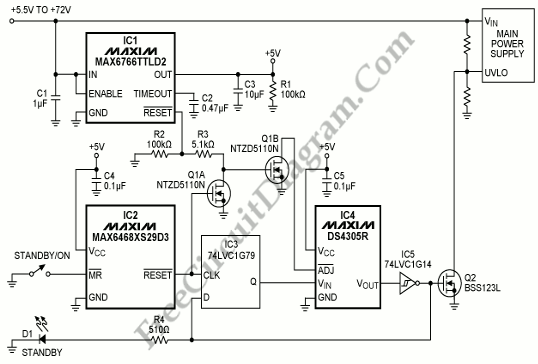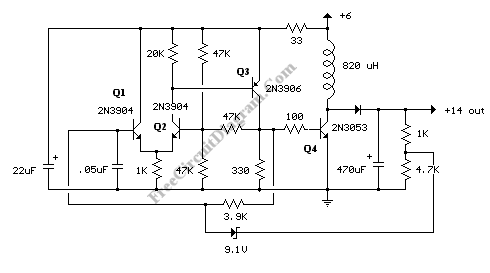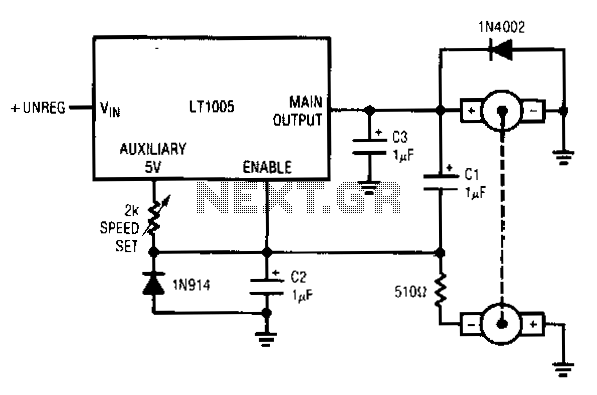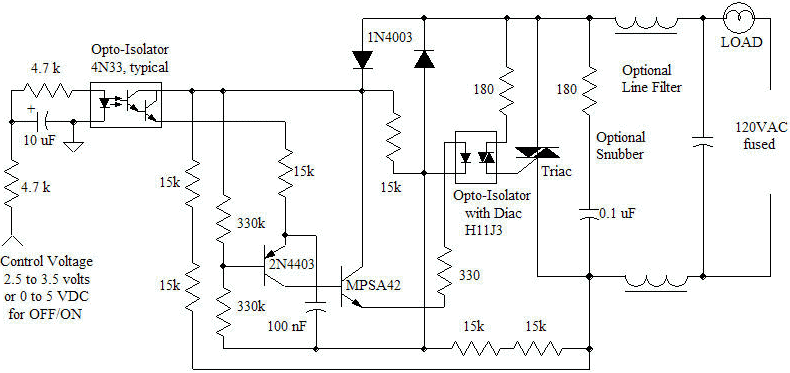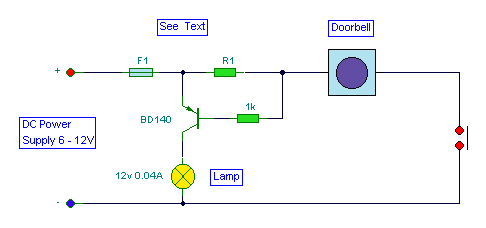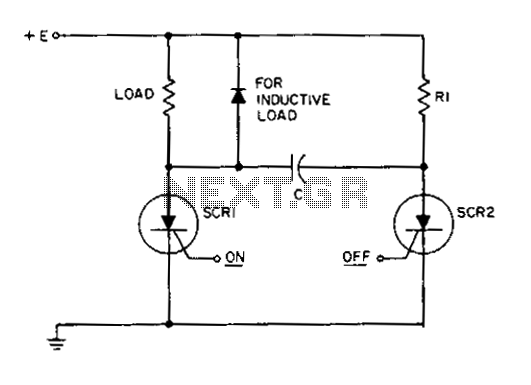
Zero crossing switch
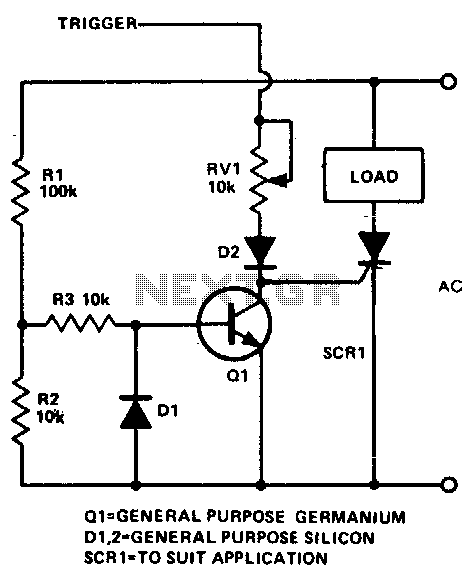
When switching loads with a thyristor, significant radio frequency interference (RFI) can occur unless a zero crossing switch is implemented. The circuit illustrates a basic single transistor zero crossing switch. Resistors R1 and R2 function as a potential divider, producing a voltage at their junction that is approximately 10% of the AC voltage. This voltage is then supplied through resistor R3 to the base of the transistor. If the voltage at this junction exceeds 0 V, the transistor will conduct, diverting any gate current from the thyristor to ground. Additionally, when the line potential drops below approximately 2 V, the thyristor can be triggered. Diode D1 is included to eliminate any negative potential that could lead to reverse breakdown.
The described circuit serves as an effective solution to mitigate RFI when controlling loads with a thyristor. The use of a single transistor as a zero crossing switch allows for precise timing in the conduction of the thyristor, ensuring that it only activates when the AC voltage crosses zero, thus minimizing the abrupt changes in current that contribute to RFI.
In this configuration, resistors R1 and R2 create a voltage divider that scales down the AC voltage to a manageable level for the transistor's base. The junction voltage, being around 10% of the AC voltage, ensures that the transistor remains in an off state until the AC waveform approaches zero, at which point the voltage rises enough to turn on the transistor.
Resistor R3 plays a crucial role by providing a current path to the base of the transistor, allowing it to switch on and effectively shunt the thyristor gate current to ground. This action is essential for controlling the thyristor's operation, preventing unintentional triggering and ensuring that the thyristor only conducts when intended.
Diode D1 is strategically placed to protect the circuit from negative voltages that could otherwise cause damage to the thyristor. By blocking any reverse voltage, D1 ensures the reliability and longevity of the circuit components.
Overall, this simple yet effective design illustrates the importance of zero crossing detection in thyristor applications, enhancing performance while reducing unwanted electromagnetic interference.When switching loads with the aid of a thyristor, a large amount of RFI can be generated unless some form of zero crossing switch is used. The circuit shows a simple single transistor zero crossing switch. Rl and R2 act as a potential divider. The potential at their junction is about 10% of the ac voltage. This voltage level is fed, via R3, to the transistor"s base. If the voltage at this point is above 0, the transistor will conduct, shunting any thyristor gate current to ground
When the line potential is less than about 2 V, it is possible to trigger the thyristor. The diode Dl is to remove any negative potential that might cause reverse breakdown. 🔗 External reference
The described circuit serves as an effective solution to mitigate RFI when controlling loads with a thyristor. The use of a single transistor as a zero crossing switch allows for precise timing in the conduction of the thyristor, ensuring that it only activates when the AC voltage crosses zero, thus minimizing the abrupt changes in current that contribute to RFI.
In this configuration, resistors R1 and R2 create a voltage divider that scales down the AC voltage to a manageable level for the transistor's base. The junction voltage, being around 10% of the AC voltage, ensures that the transistor remains in an off state until the AC waveform approaches zero, at which point the voltage rises enough to turn on the transistor.
Resistor R3 plays a crucial role by providing a current path to the base of the transistor, allowing it to switch on and effectively shunt the thyristor gate current to ground. This action is essential for controlling the thyristor's operation, preventing unintentional triggering and ensuring that the thyristor only conducts when intended.
Diode D1 is strategically placed to protect the circuit from negative voltages that could otherwise cause damage to the thyristor. By blocking any reverse voltage, D1 ensures the reliability and longevity of the circuit components.
Overall, this simple yet effective design illustrates the importance of zero crossing detection in thyristor applications, enhancing performance while reducing unwanted electromagnetic interference.When switching loads with the aid of a thyristor, a large amount of RFI can be generated unless some form of zero crossing switch is used. The circuit shows a simple single transistor zero crossing switch. Rl and R2 act as a potential divider. The potential at their junction is about 10% of the ac voltage. This voltage level is fed, via R3, to the transistor"s base. If the voltage at this point is above 0, the transistor will conduct, shunting any thyristor gate current to ground
When the line potential is less than about 2 V, it is possible to trigger the thyristor. The diode Dl is to remove any negative potential that might cause reverse breakdown. 🔗 External reference
Warning: include(partials/cookie-banner.php): Failed to open stream: Permission denied in /var/www/html/nextgr/view-circuit.php on line 713
Warning: include(): Failed opening 'partials/cookie-banner.php' for inclusion (include_path='.:/usr/share/php') in /var/www/html/nextgr/view-circuit.php on line 713
